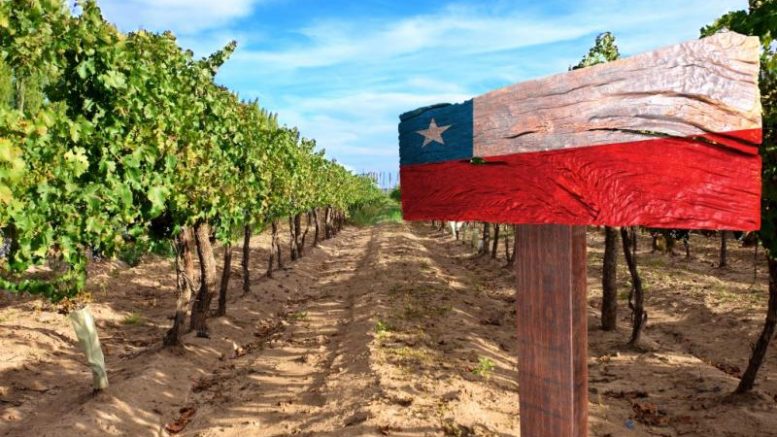Chile Bans Tributyltin, Terbufos, and Methoxychlor
Brazil
In compliance with court decisions, Anvisa approves toxicological evaluations of Cletodim 360 g/L EC from Brilliance; Acetamiprid 200 + piriproxyfen 100 g/L OD from Tecnomyl; Mancozeb 400 + prothioconazole 38 + picoxystrobin 29 g/L SE from Adama; Mancozeb 400 + tebuconazole 33.33 + picoxystrobin 26.66 g/L SC from UPL; and Diquat dibromide 374 g/L SL from Perterra. (Anvisa)
Anvisa approves toxicological evaluation of a new microbiological product – an active ingredient not yet registered in the country, based on Ooencyrtus submetallicus from Vittia Fertilizantes. (Anvisa)
According to an article from researchers Marconi Júnior, Beatriz Costalonga and Sérgio Bailio, the flight height of drones impacts the distance from equipment to target and the range of application. A greater height increases the application range, but also the risks of drift and evaporation. Spray nozzles with anti-drift technology can be beneficial by reducing such risks. The flight height, along with climatic factors and crop characteristics, determines the effectiveness of the phytosanitary treatment. (UFV)
FMC reached US$ 4.25 billion in revenues in 2024, down 5% when compared to 2023. Consolidated net profit was US$ 342 million, a 74% reduction when compared to the previous year. Despite the annual decline, the company reported growth in the 4Q, driven by a 7% increase in sales. There was a retraction in average sales prices, which fell 6% throughout the year. The exchange rate was another problem, with a negative impact of 2% on annual revenues, mainly due to the devaluation of the Brazilian real. “Distribution channels in Brazil have undergone a strong trend of consolidation. Territories that were well covered and served are no longer performing as well. This is one of the reasons we decided to explore new routes… including a more direct approach to big farmers”, said Pierre Brondeau, CEO. (FMC Corporation)
Deliveries of fertilizers reached 4.21 million tonnes in November 2024, 5.5% above the 3.99 million tonnes in the same month of 2023. From January to November, deliveries reached 42 million tonnes, a drop of 0.5% when compared to the 42.21 million tonnes in the same period of 2023. (ANDA)
Fertilizer Purchasing Power Index of January 2025 closed at 1.09, growth of 4% compared to December 2024, which means a worsening in the exchange rate for the farmer. Despite the recovery in the price of some commodities, the increase in the average price of fertilizers was the decisive factor for the result. (The Mosaic Company)
National Association of Phytosanitary Products Industries promotes a workshop on the Bioinputs Law and the Nagoya Protocol. The Workshop: “Bioinput Law and Nagoya Protocol” will be held on February 25th, a free event with a lecture by Lidia Cristina Jorge dos Santos, lawyer at Figueiredo e Santos Sociedade de Advogados. (Aenda)
With the aim to expanding national reserves for mineral inputs and reducing dependence on imported fertilizers, the Geological Survey of Brazil (SGB) is developing the Brazil Phosphate Project, an initiative aligned with the National Mining Plan 2030. As one of the results of the project, SGB published the mineral resources report ‘Assessment of Brazil’s Phosphate Mineral Potential – Area: Devonian Sequence in the Paraná Basin (States of Paraná and Mato Grosso do Sul)’. The study deepens the geological knowledge of the region and seeks to attract investments to the mineral sector. (SGB)
The Federal Attorney General’s Office expressed its support for maintaining the tax relief policy for pesticides established by the National Council for Financial Policy and the Consumption Tax Reform. The Union’s attorney general, Jorge Messias, does not consider that the regulations, in isolation, encourages the use of pesticides nor violates public health and the environment. (AGU)
According to Pietra Dos Santos, cultural management supervisor at bp bioenergy, aerial spray in sugarcane allows the fast and uniform application of pesticides, and it depends on factors such as precise calibration of equipment and appropriate climatic conditions, including control of wind speed, relative humidity and temperature. These adjustments are essential to ensure the correct placement of products and maximize their benefits in the farms. “The growth trend of aerial spray in sugarcane reflects the sector’s effort to increase production efficiency, reducing operational costs and environmental impacts”. (bp bioenergy)
Soybean production costs in the State of Mato Grosso continue rising. The estimated cost for the 2025/26 season reached US$ 693.31 per hectare in December of 2024, an increase of 3.92% compared to the previous month. This was driven by the increase in the price of essential inputs, such as seeds (+6.58%), fertilizers (+5.07%) and pesticides (+2.08%). As a consequence, the Effective Operating Cost of production reached US$ 966.31 per hectare, an increase of 2.95% when compared to November. (IMEA)
Researchers at the Federal University of Piauí have demonstrated the allelopathic and herbicidal potential of jarak (Jatropha gossypiifolia L.), highlighting its application in weed management. By using in vitro bioevaluation, researchers demonstrated the inhibitory effect of jarak’s powder on seed germination and initial growth of the weed plant Bidens bipinnata. (UFPI)
Resistance of crowfoot grass (Eleusine indica) to herbicides has become a growing challenge for farmers in the southern region in the State of Minas Gerais, according to Fernanda Medeiros, head of department and professor at the Federal University of Lavras. According to Medeiros, this weed is affecting soybean, corn and coffee crops, reducing yields due to the difficulty of chemical control. The problem occurs due to the repetitive use of herbicides with the same mechanism of action, such as ACCase inhibitors and EPSPs (glyphosate). (UFLA)
Military Police of Paraná recovered 80 tonnes of fertilizers stolen in Paranaguá, in the State of Paraná, valued at approximately US$ 20,175. The load was found in a warehouse after the driver’s confession. (Military Police)
Asian soybean rust spores were detected in western of State of Bahia at three spots: Anel da soja/Estrada do Café, Placas/Bela Vista and Paraíso/Rodovia da soja. (Bahia Agricultural Defense Agency)
Yara Fertilizers reported a loss of US$ 290 million in the Q42024, compared to a profit of US$ 246 million in 2023. Revenue fell by 5%, and EBITDA dropped 38.6% to US$ 360 million. Fertilizer production increased by 1.7%, while ammonia production decreased by 4.2%. For the year, revenue totaled US$ 13.934 billion (-10.83%), and EBITDA was US$ 2.051 billion (+20%). The company expects to reduce costs by US$ 150 million by the end of 2025. (Yara Fertilizers)
Urea prices increased by 14.5% in January, reaching US$ 417/tonne, due to a decline in production in Iran and higher international demand, especially from India and the US. (Itaú BBA)
Carrot.eco and Tera Ambiental launched the first organic fertilizer tracked by artificial intelligence. The technology uses AI and blockchain to monitor the entire process, from the waste to the final fertilizer. (Carrot.eco; Tera Ambiental)
Greening incidence reached 44% in the citrus belt in the State of São Paulo and Triângulo Mineiro area, marking the seventh consecutive year of disease increase. (Fundecitrus)
Military Highway Police seized 400 kg of powder pesticides and 320 liters of foreign origin on the MS-164, valued at approximately US$ 129,533. A 50-year-old fugitive was arrested after attempting to flee the checkpoint. (PMR)
Embrapa launches two soybean varieties (BRS 2361 I2X and BRS 2058 I2X) and two bean varieties (BRS FC422 and BRS FP417) at Show Rural Coopavel. It also presented the Azoscoop inoculant for corn, in partnership with Coopavel. (Sistema Ocepar)
Agrodefesa and the Military Police seized nearly 6,000 empty containers and 37 with pesticide residues in Abadiânia, State of Goiás. The material was stored illegally without registration in InpEV, posing an environmental risk. The responsible parties were fined up to US$ 8,630. (Agrodefesa)
Federal Public Ministry recommended farmers in Seringueiras, State of Rondônia, to suspend pesticide spraying near the Puruborá Indigenous land, after environmental damage to the Manoel Correia River, including fish deaths and impacts on the community’s health. Farmers have 15 days to respond. (MPF)
The State of Goiás Agency for Agricultural Defense issued a warning about the illegal cultivation of banana trees along highways, which can spread pests such as Black Sigatoka and Fusarium oxysporum, threatening banana production in the state, which is responsible for 65% of the production in the Midwest. The practice is prohibited, and inspections have been intensified, with fines and sanctions against offenders. (Agrodefesa)
More than 200 kg of pesticides smuggled from Paraguay, in 288 sacks valued at approximately US$ 51,779, were seized in the State of Goiás by the Division Operations Command. (COD)
Biosphera AgroSolutions launched BioVelox, a bioinput composed of Lactobacillus plantarum, Rhodopseudomonas palustris and Saccharomyces cerevisiae, to improve soil-plant interaction. Bioinputs market in Brazil grew by 10.3% in 2024, with a 52% increase in inoculants. The company invests over US$ 172,000 annually in research. (Biosphera AgroSolutions)

Latin America
Corteva ended 2024 with net revenue of US$ 16.9 billion, a drop of 2% compared to 2023. Despite the reduction in consolidated results, organic sales increased by 1%, with gains in volume in Latin America and Asia Pacific, partially offsetting losses in Europe, the Middle East and Africa. The seed segment, which had revenues of US$ 9.5 billion in 2024, saw revenue growth of 1%. The increase was influenced by the expansion of the area planted with off-season corn in Brazil. Volume rose 1% in the year, while average prices grew 3%. In the crop protection sector, revenue was US$7.4 billion, a reduction of 5% compared to the previous year. The drop was driven by a 5% decline in prices, the result of competitive pressures in Latin America. (Corteva Agriscience)
Researchers from the Institute for Research in Agricultural and Environmental Biosciences in Argentina published a study on the use of green nanotechnology to protect soybeans. The work evaluated the spray of starch-stabilized silver nanoparticles (st-AgNPs) as a sustainable alternative for managing the bacteria Pseudomonas savastanoi, which causes bacterial blight. (Conicet)
Fertilizer consumption in Argentina grew by 7% to 4.9 million tonnes, driven by the recharge of water in the soil, an increase in the wheat area and greater use of early corn. (Fertilizar)
In La Pampa, Argentina, the use of agrochemicals has doubled in 30 years, reaching 37.1 million L/year. The region consumes 6.4% of the country’s agrochemicals, in which 42% are herbicides. (National Institute of Agricultural Technology)
Agricultural and Livestock Service has banned tributyltin, terbufos and methoxychlor in Chile. (SAG)
Atome PLC, a British company, confirmed a US$ 500 million investment to build a green fertilizer plant in Paraguay, with operations expected to begin in 2027. Yara plans to purchase all the production, and the country, with its renewable energy, aims to position itself as a leader in the green hydrogen economy. (Minister of Economy and Finance; Atome PLC)
FAO and the Southern Cone Plant Health Committee event features a simulation by Paraguay‘s National Plant and Seed Quality and Health Service to control Fusarium oxysporum, a fungus that causes banana plant wilt and death, surviving in the soil for over 30 years. (Senave; Cosave)

READ MORE:

